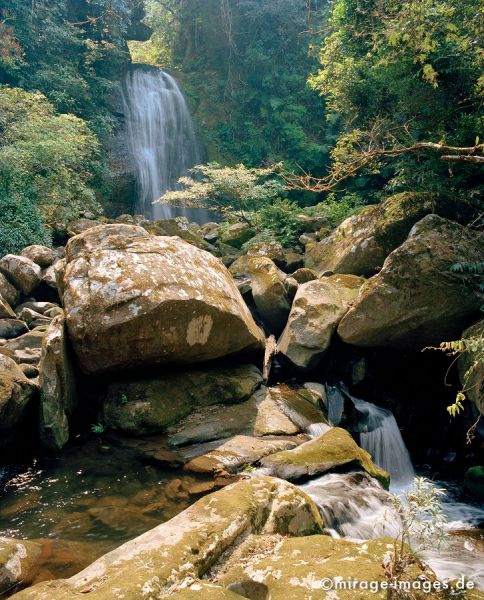
Just a couple of kilometers from the main coastal road between Phuket and Khao Lak (Phang Nga province, southern Thailand) is the waterfall of Khamin. Not located within any protected area little is known of this waterfall, at least on the net. The name is synonymous with the mountain behind it, the 600+ meter high Khao Khamin.
The fall itself is roughly 15 meters high, not a direct fall but on a slight slant. Beneath is a nice pool, albeit somewhat small. Some enhancement has been tried by placing picnic tables. By the sight of all the refuse lying around it is pretty evident that it sees heavy use only not when I was there.
Getting there is pretty straight forward. The falls are located between kilometer markers 36 and 37, two kilometers before the Thung Maphrao by-pass. The road up the hill is roughly 2 kilometer with a small parking spot.
The fall itself is roughly 15 meters high, not a direct fall but on a slight slant. Beneath is a nice pool, albeit somewhat small. Some enhancement has been tried by placing picnic tables. By the sight of all the refuse lying around it is pretty evident that it sees heavy use only not when I was there.
Getting there is pretty straight forward. The falls are located between kilometer markers 36 and 37, two kilometers before the Thung Maphrao by-pass. The road up the hill is roughly 2 kilometer with a small parking spot.





































